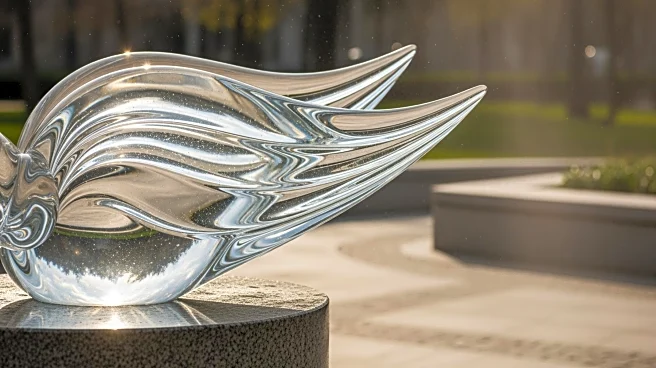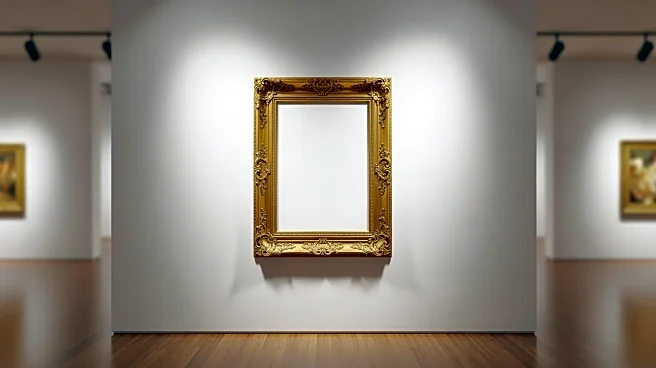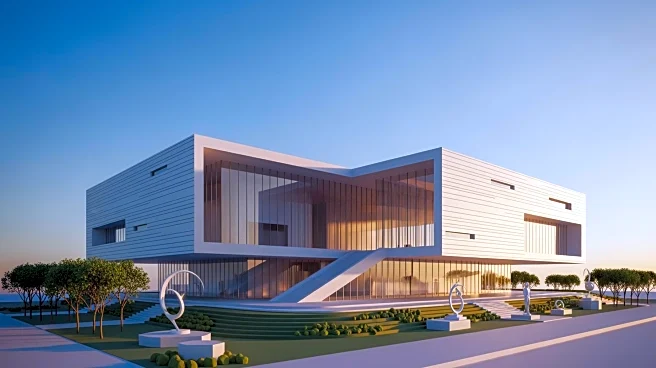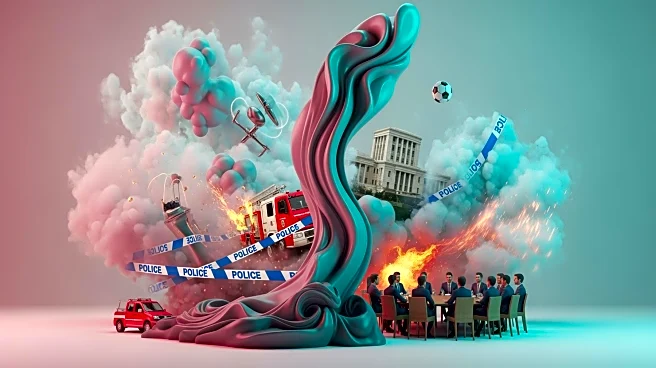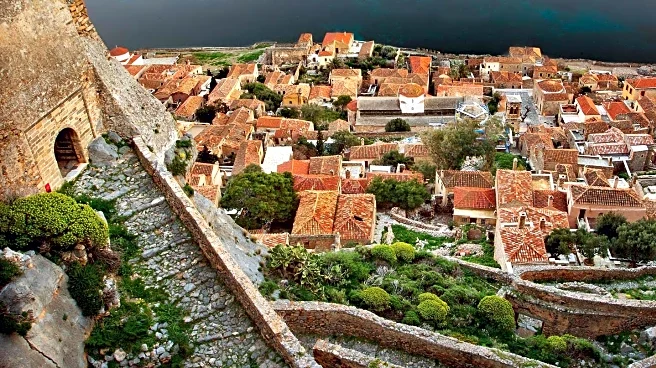What's Happening?
Athens municipal workers have undertaken the cleaning of the iconic glass sculpture 'Dromeas' (The Runner), created by Greek artist Costas Varotsos. This operation, conducted in collaboration with Karcher
systems, is part of a routine maintenance schedule where the sculpture is cleaned every two years. The artwork, standing 12 meters high, is located across from the Athens Hilton and consists of thousands of jagged glass panes mounted on an iron frame, depicting a runner in motion. Athens Mayor Haris Doukas emphasized the importance of preserving such symbols, stating that these monuments are integral to the city's history and memory.
Why It's Important?
The cleaning of 'Dromeas' underscores the significance of maintaining cultural landmarks, which serve as vital components of a city's identity and heritage. Such efforts reflect a commitment to preserving historical art pieces that contribute to Athens' reputation as a leading cultural destination. The sculpture not only enhances the aesthetic appeal of the city but also attracts tourists, thereby supporting the local economy. By ensuring the upkeep of these monuments, Athens reinforces its cultural legacy and continues to draw international attention as a city rich in history and art.
What's Next?
The regular maintenance of 'Dromeas' suggests ongoing efforts by the Athens municipality to preserve other cultural landmarks throughout the city. Future initiatives may include similar cleaning operations for other significant artworks and monuments, ensuring their longevity and continued contribution to Athens' cultural landscape. These actions may also inspire other cities to prioritize the preservation of their own historical and cultural assets, fostering a broader appreciation for public art and its role in urban environments.
Beyond the Headlines
The cleaning of 'Dromeas' highlights the broader cultural and ethical responsibility of cities to maintain their historical artifacts. It raises questions about the allocation of resources for cultural preservation and the role of public-private partnerships in maintaining public art. Additionally, it reflects a growing awareness of the importance of cultural heritage in urban planning and development, potentially influencing future policies that prioritize the integration of art and history in cityscapes.
